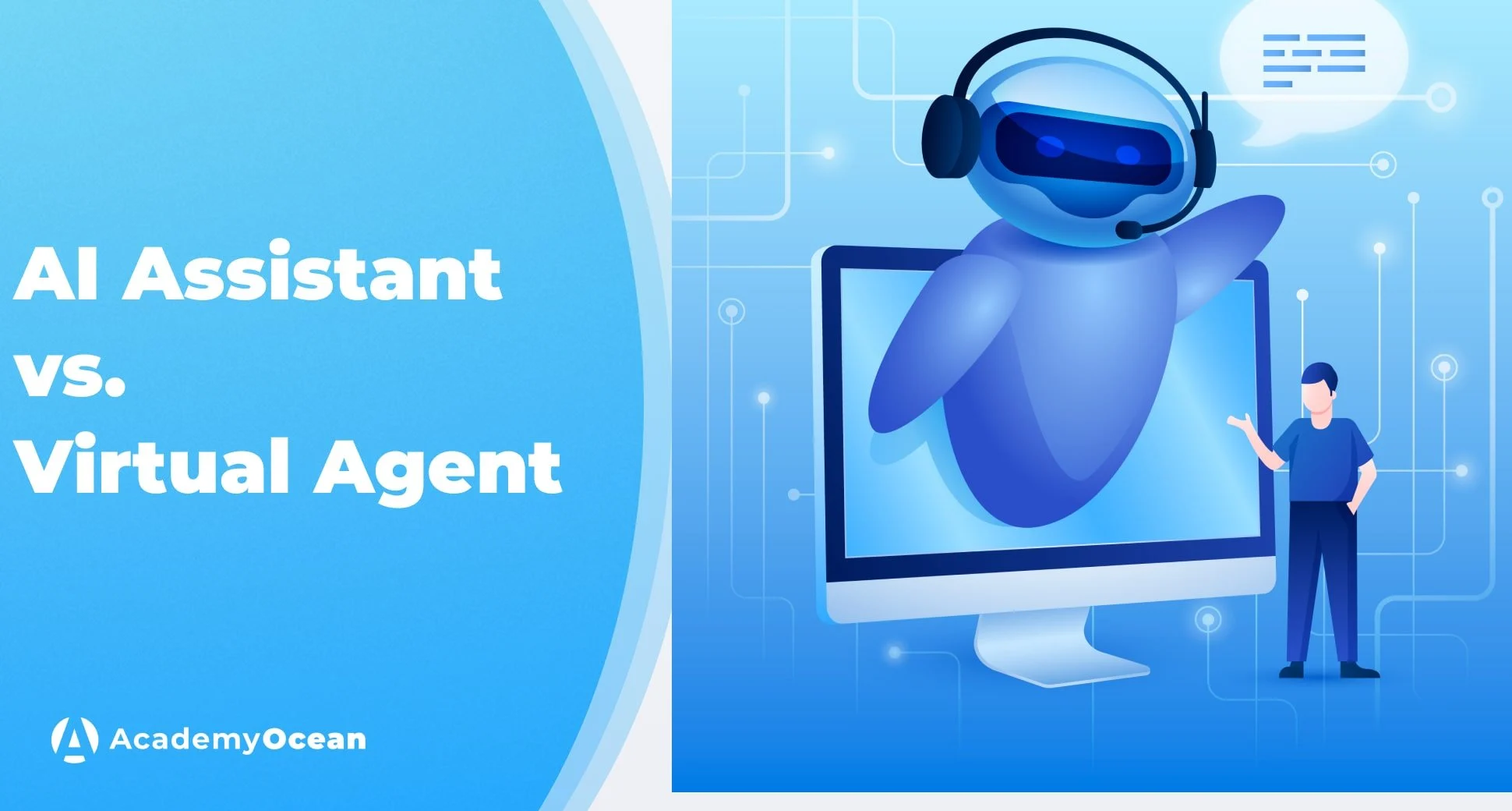What is the difference between an AI assistant and a virtual agent

Understanding Virtual Agents
Key Differences
Use Cases in Customer Support
Use Cases in Enterprise Software
Cost and Integration Comparison

Understanding AI Assistants
So, what is AI assistant? It is a software application designed to understand natural language and perform tasks or provide information based on user requests.
Key capabilities and characteristics of AI assistants include:
Information retrieval, scheduling, reminders, and basic task management
Natural language processing to interpret and respond to user commands
Similar functionality to consumer tools like Siri, Alexa, or Google Assistant
Context awareness and conversational continuity across interactions
Memory of previous exchanges, eliminating the need to repeat information
Ability to maintain dialogue flow (e.g., asking about weather today, then "What about tomorrow?")
Operation within predefined parameters based on training data
Strong performance with straightforward requests
Limited capability with complex queries requiring deeper reasoning
Challenges when faced with specialized knowledge outside their training scope
Personalization AI represents a significant advancement in this field. Over time, modern AI assistants adjust to the tastes and actions of their users. Based on past usage, they anticipate demands and modify responses in response to patterns of engagement.
Understanding Virtual Agents
AI virtual agents represent a more specialized implementation of artificial intelligence technology. Unlike general-purpose assistants, virtual agents are designed to handle specific domains or business functions with greater autonomy and capability for complex decision-making.
Key capabilities and characteristics of virtual agents include:
Deployment for specific use cases like customer service, IT support, or sales assistance
Deep knowledge of specialized domains
Ability to navigate complicated processes without human intervention
Handling of complex scenarios like loan applications, account troubleshooting, or financial planning
Management of tasks requiring specialized knowledge and multi-step processes
Greater sophistication than basic chatbots as an AI virtual assistant
Advanced AI technologies including machine learning
Computer vision capabilities to handle unpredictable scenarios in some implementations
Continuous improvement through interaction data analysis
Integration with business systems like CRM platforms, knowledge bases, and transactional systems
Access to real-time data across connected platforms
Execution of actions on behalf of users within integrated systems
Delivery of personalized experiences based on customer profiles and history
Functioning as digital workers capable of executing tasks rather than merely providing information
Key Differences
To resolve the battle AI assistant vs. virtual agent, we need to examine several key factors.
AI assistant vs virtual agent distinction centers on several fundamental factors
Purpose and scope differences: AI assistants function as general helpers across multiple domains, while virtual agents specialize in specific business functions
Knowledge depth: AI assistants offer broad knowledge, while virtual agents provide deeper expertise in narrower fields
Technological foundation: Both use AI technologies, but with different implementations
Complexity of components: Virtual agents incorporate more sophisticated elements like sentiment analysis, decision trees, and enterprise system integration
Focus areas: AI assistants prioritize conversational fluidity and broad knowledge, while virtual agents emphasize specialized problem-solving capabilities
Context handling: Virtual agents excel in specific contexts, while assistants manage a wider variety of simpler scenarios
Difference between virtual assistant and AI agent becomes clear in their autonomy levels
Process independence: Virtual agents complete multi-step processes without human intervention
Command requirements: AI assistants generally need more guidance and explicit instructions for each action
Decision-making authority: Virtual agents can make more complex decisions within their domain of expertise
Use Cases in Customer Support
The real-world differences between these technologies are illustrated by customer service. In this situation, AI assistants can work with simple inquiries on account status, product details, or business hours. They are excellent at answering simple, high-volume questions that might otherwise take up support staff time.
On the other hand, virtual agents oversee whole customer journeys. They may process returns or exchanges, diagnose complicated issues, examine consumer history, authenticate users, and even make decisions based on corporate policy. For instance, without requiring human assistance, a telecoms virtual agent might diagnose problems with internet access, check service status, and walk clients through the resolution process.

Within enterprise environments, the distinction between AI chatbot vs AI assistant, AI assistant becomes particularly relevant. Typically, enterprise AI assistants aid staff members with finding information, navigating internal systems, and carrying out routine administrative duties like reminding people or setting up meetings. Instead of being process owners, they serve as productivity boosters.
In this case, virtual agents manage more important tasks. They could handle requests for IT access, prepare employee expenditure reports, or assist with onboarding. Because of their multi-system integration, they can operate as a bridge between workers and sophisticated enterprise software, streamlining communication through natural language interfaces instead of forcing users to get familiar with many platforms.
Cost and Integration Comparison
Cost Comparison
AI Assistants:
Lower investment in development and maintenance
Operate on pre-built platforms with standardized capabilities
Minimal customization required for implementation
Faster deployment timeline
Lower ongoing maintenance costs
Virtual Agents:
Greater upfront investment required
Custom development necessary for specialized functions
Integration with existing systems more complex
Ongoing training with domain-specific data needed
Often deliver stronger ROI through automation of complex processes
Can replace tasks requiring skilled human labor
Integration Complexity
AI Assistants:
Minimal integration requirements
Simple connections to:
Calendars
Email systems
Basic company information sources
Standardized APIs and connectors
Less technical architecture needed
Virtual Agents:
Deep integration with core business systems required
Connections to:
Customer databases
CRM platforms
Operational tools
Knowledge management systems
More sophisticated technical architecture necessary
Higher maintenance requirements
Specialized IT knowledge needed for implementation
